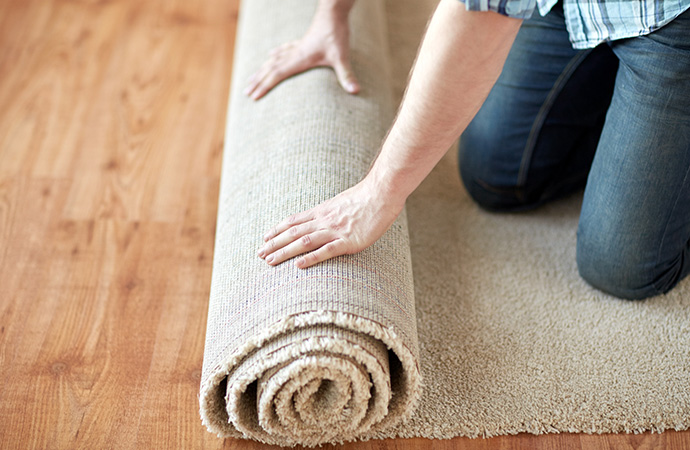How to Choose a New Carpet
Purchasing a new carpet for a home is a great investment for homeowners. However, many people rush through the selection process and end up buying a carpet that doesn't match their lifestyle and aesthetic, despite being a major feature in your home's decor. Oftentimes, consumers are misled by carpet salesmen who may push a certain brand or styles that they make a higher profit margin from, or are overstocked on. We are here to assist you in choosing the best carpet for your home that matches your requirements and suits your taste. We can provide trusted references to reputable companies for your carpet purchase.
When choosing a new carpet, consider these questions and factors: For what purpose the room will be used? How much foot traffic will it experience? Is it a highly active space for family and guests? Does it have direct access to the outside, or is it far from the entrance? Will the carpet get a lot of exposure to sunlight?
Here are some things to consider:

Price: Your priorities and preferences play a big role when you choose a carpet or rug to buy. With a wide range of options available in the market, it is important to consider how long you intend to keep the carpet before replacing it. Higher-quality carpets with good materials tend to last longer, especially in high-foot-traffic areas like living rooms, hallways, and stairs. A mid-range carpet will still give perfect support and great durability for less foot traffic areas like the bedrooms or guest rooms.
Buy the best carpet you can afford for the heavy traffic areas of your home – family room, dining room, hallways and stairs. A medium grade is sufficient in rooms with less traffic – bedrooms, and guest rooms. Manufacturers sell different grades of the same color and style, making it easy to use different grades in your home, while maintaining a consistent appearance in all rooms.
When obtaining a cost estimate, make sure that the estimate includes pad, installation, furniture moving, and removal and disposal of your old carpeting.
Color: Color selection can be a very personal choice. Lighter colors can make the room feel more spacious, while dark colors add a sense of warmth and comfort. Light colors allow much more flexibility in decoration. Medium to darker shades, as well as tweeds and texture patterns are great at hiding dirt and stains in high foot-traffic areas of your home. Selling your home soon? Choose a lighter, neutral color. Studies have shown that homes with darker-colored carpets, on average, take longer to sell.
Fiber Content: There are 4 major types or carpet pile fiber:
- Nylon: Approximately 65% of all carpets sold in the U.S. are made from Nylon. We highly recommend Nylon because of its wear resistance, ease in cleaning, ability to hold up in heavy traffic areas and its ability to hide soil and stains. Nylon carpets are prone to facing in rooms that receive an abundance of direct sunlight.
- Olefin (polypropylene): Moisture and fade resistant, Olefin is cheaper to manufacture than Nylon. Many Berber style carpets are made from this fiber. Negatives: Melts easily at lower temps, sometimes simply by the friction created while dragging furniture across it. Difficult to clean, it is “oil loving” meaning it absorbs oily stains, but will repel water based cleaners. Olefin carpets tend to show wear in the traffic areas sooner.
- Polyester: Noted for its luxurious, soft feel when used in thick, cut pile textures. Carpets made with Polyester fibers are more difficult to clean. Experts say polyester fibers also are prone to showing wear in traffic areas prematurely.
- Wool: Probably the longest wearing of all carpet fibers. Wool is also the most expensive. If it’s in the budget, consider a blend of both Nylon and Wool fibers. This blend combines the durability of wool with the “clean ability” of Nylon.
Quality: Density and fiber twist are the two most important factors in carpet performance. The denser (more fiber per sq. yard) the better. Density is measured in “face-weight.” The higher the face weight, the better. Carpet with a tighter twist also provide enhanced durability.
Carpet Cushion: Never cut costs when choosing a carpet pad. A good quality pad will extend the life of your carpet while making it feel more luxurious. Select the pad that is recommended for your particular style of carpet. Installing the wrong pad may void your manufacturer’s warranty.
When you are ready to purchase new carpet, keep these tips in mind. If you have any questions, feel free to give Anchor Restoration a call for our carpet services and expertise. We are always happy to help!








